Pros and Cons
A built-in kitchen has its pros and cons. Let’s take a closer look.
- Appearance. The kitchen set and built-in appliances look like a single whole. Everything is arranged harmoniously, nothing spoils the overall picture.
- Ergonomics. In a well-planned built-in kitchen, it is convenient to use everything – from cabinets to household appliances.
- Space saving. Thanks to the use of every centimeter of space, you will be able to fit everything you need in a small area.
- Expensiveness. A modular set + freestanding appliances will cost at least 20% less.
- Statics. After assembling the kitchen, almost nothing can be changed, so the project has no room for error.
- Problematic repair, replacement of equipment. When removing a broken item, you will have to disassemble the structures located nearby. Only a version with similar parameters will be suitable to replace a broken one.
How is it different from a modular kitchen?
A modular kitchen consists of cabinets and drawers of standard sizes – 15, 30, 45, 60, 80, 100 cm. All modules are available with different filling – drawers, shelves, 1 or 2-door cabinets.
Another nuance – factory kitchens are often made from the cheapest, and therefore not the highest quality materials.
You just need to decide on the filling, order the delivery of ready-made furniture from the warehouse – this will speed up the process of arrangement. During assembly, you can install freestanding appliances or cut in built-in appliances yourself.
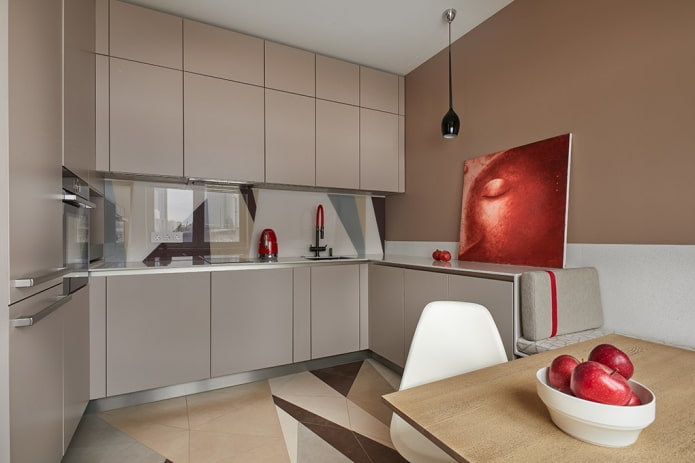
The photo shows a beige built-in kitchen
If the kitchen is built-in, the design is selected exactly according to the size of the room. This means that even 5 cm of the wall will not remain empty. In addition, there will be real places for a hob, oven, dishwasher, microwave, refrigerator, coffee machine, and other appliances.
The advantages include the absence of gaps and joints. Therefore, built-in furniture looks more aesthetically pleasing and is considered more hygienic.
However, a built-in set cannot be taken with you when moving – because it is designed for a specific kitchen.
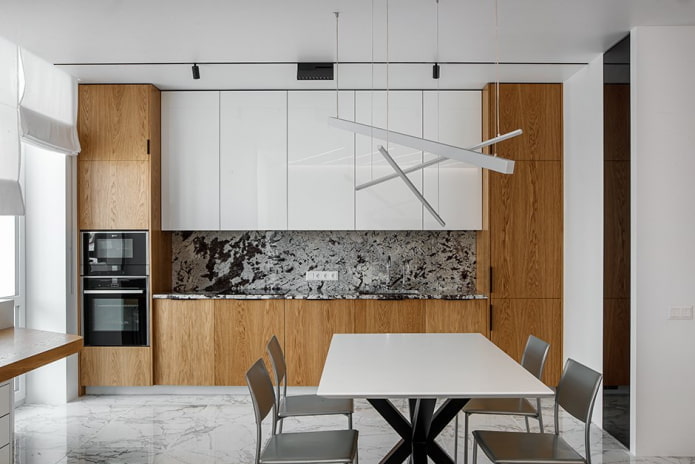
The photo shows a modern set up to the ceiling
How to choose the right one?
In order not to make a mistake with the design of a built-in kitchen, designers advise first choosing built-in appliances, and then ordering the cases.
When choosing electrical appliances, you need to take into account everything that may be needed. From the largest to the smallest and, at first glance, unnoticeable. A refrigerator, a mixer or a multicooker can be built-in. You will have to decide not only the number of elements, but also the sizes: how many burners should the stove have, what size refrigerator, how wide is the dishwasher?
There are two types of placement of built-in appliances in a built-in kitchen, they are both interesting: fully built-in or partially built-in.
- In the first case, the appliances are hidden behind the facades. Such an interior looks integral, minimalistic. And guests will not see what is hidden behind the doors.
- With partial built-in, additional elements are placed in cabinets, on shelves or in the work area. Take care of the appearance of the appliances, their harmonious combination with each other, the kitchen. It is best to buy household appliances from one manufacturer from the same series.
Don’t forget about the storage system: it should be roomy and convenient. When ordering a built-in kitchen, do not skimp on fittings: carousels for a corner cabinet, roll-out baskets, additional drawers will not hurt. Decide how much and what you will store, and the designer will select suitable ideas.
An equally important element is the sink. It should be roomy if you do not have a dishwasher. Or, on the contrary, compact, if an automatic assistant is provided.
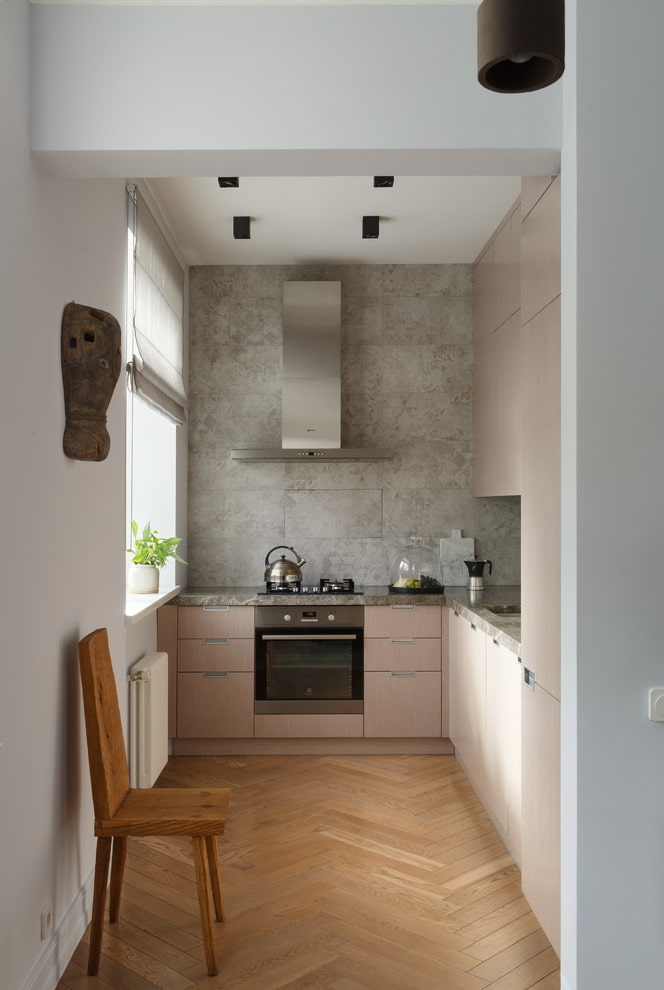
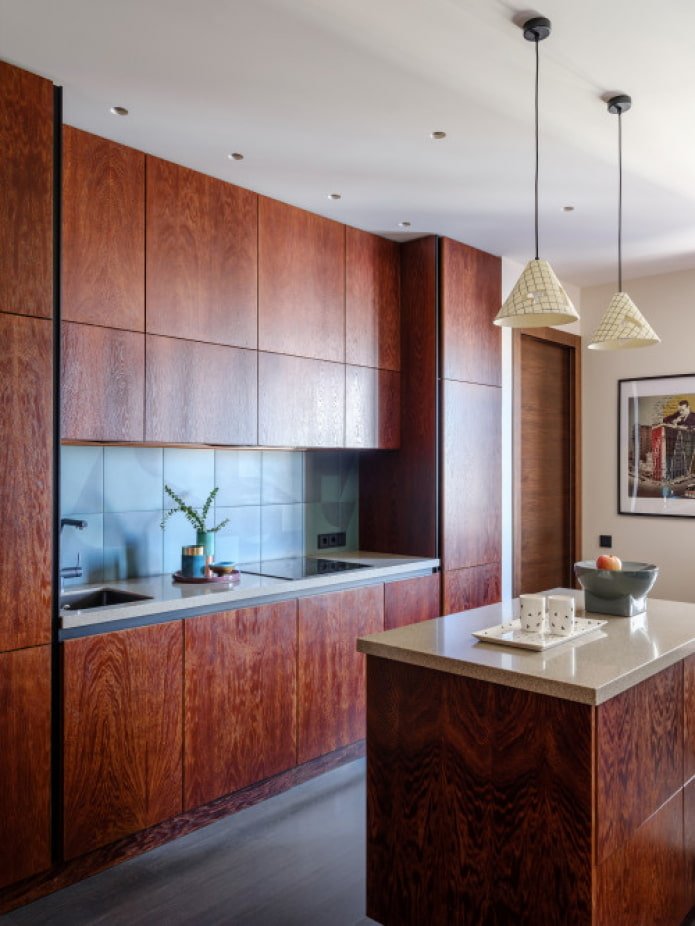
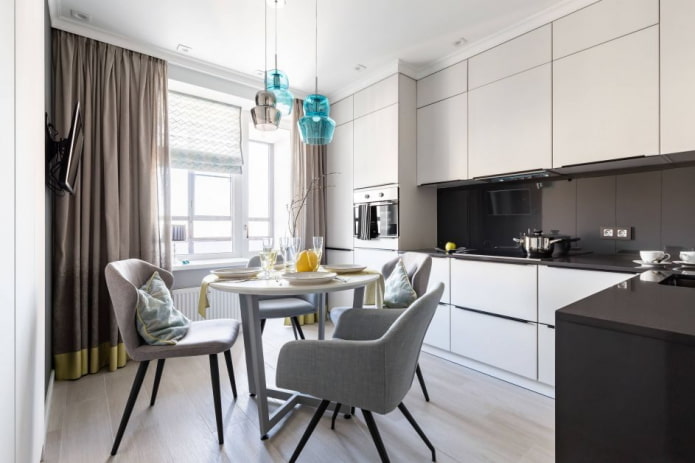
The photo shows the design of a corner kitchen with pencil cases
Equipment options
Built-in kitchen options come in various configurations. The main equipment required in most cases:
- Refrigerator. Hide behind the facade or decorate the native door. Depending on preferences, it can be a standard two-chamber or a wide two-door.
- Hob. First of all, decide on the number of burners, style. For a modern design, choose minimalist models with touch control, for a classic – convex with handles.
- Oven. Contrary to popular belief about kitchens, the oven can (and sometimes should) be hidden behind the facade. For this, the module is made a little deeper, designed in such a way that the cabinet door does not interfere with the free opening of the oven door.
- Dishwasher. In addition to the standard 45 and 60 cm, there are more compact models. They will help to save space if you have a small apartment.
The following can also be built in if desired:
- washing machine;
- hood;
- microwave;
- multicooker;
- bread maker;
- coffee maker;
- juicer.
It is recommended to build in small appliances, so they will not take up space in the cabinets and will remain in their places.
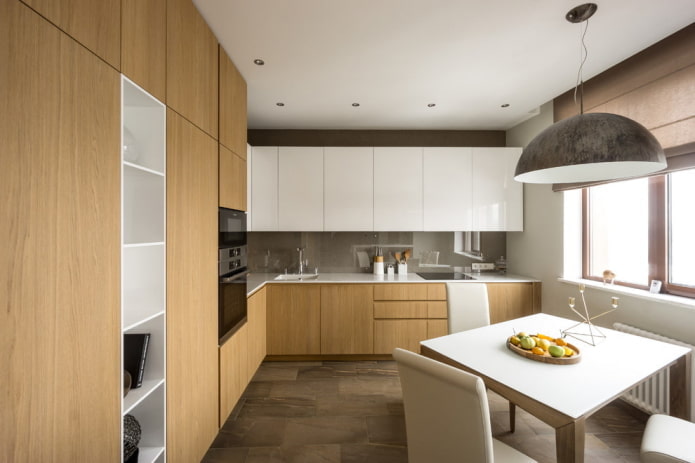

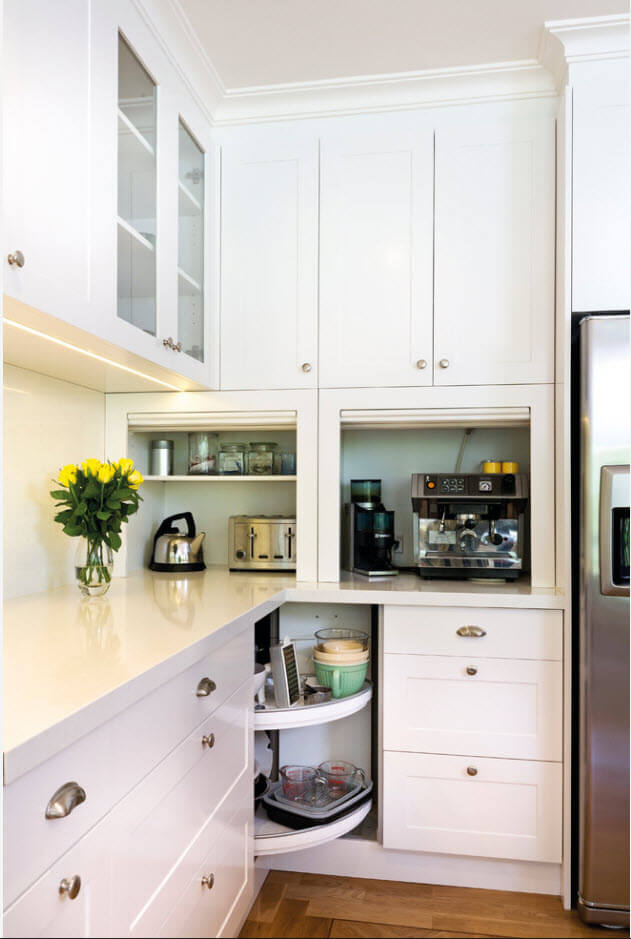
In addition to the set of equipment, its location varies. The oven is located in the lower module or at arm’s height in the pencil case. The dishwasher is slightly raised above the floor, so it is easier to unload / load.
The microwave oven is built into the pencil case or the upper module. The same applies to the coffee machine.
The built-in kitchen is equipped with other “helpers” – additional tables, pull-out cutting boards, dish dryers, vegetable baskets.
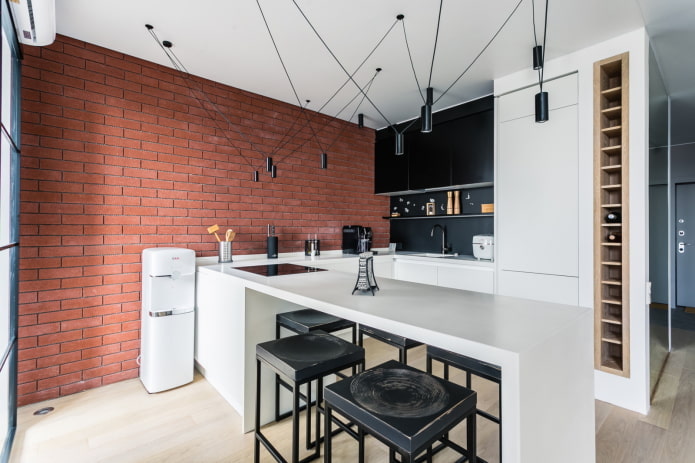
The photo shows a built-in U-shaped set
What does it look like in the interior?
Built-in kitchens come in different varieties and can be used in absolutely any room. If you have a small room, a custom-made kitchen will ensure maximum use of space down to the millimeter. To do this, follow a few rules:
- Buy only the most necessary equipment.
- Order glossy facades of a light color.
- Use modern fittings that provide greater capacity.
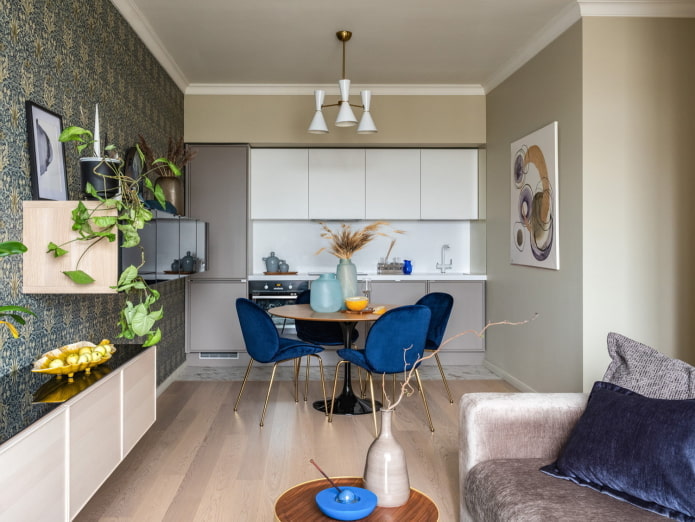
The photo shows compact kitchen furniture in a niche
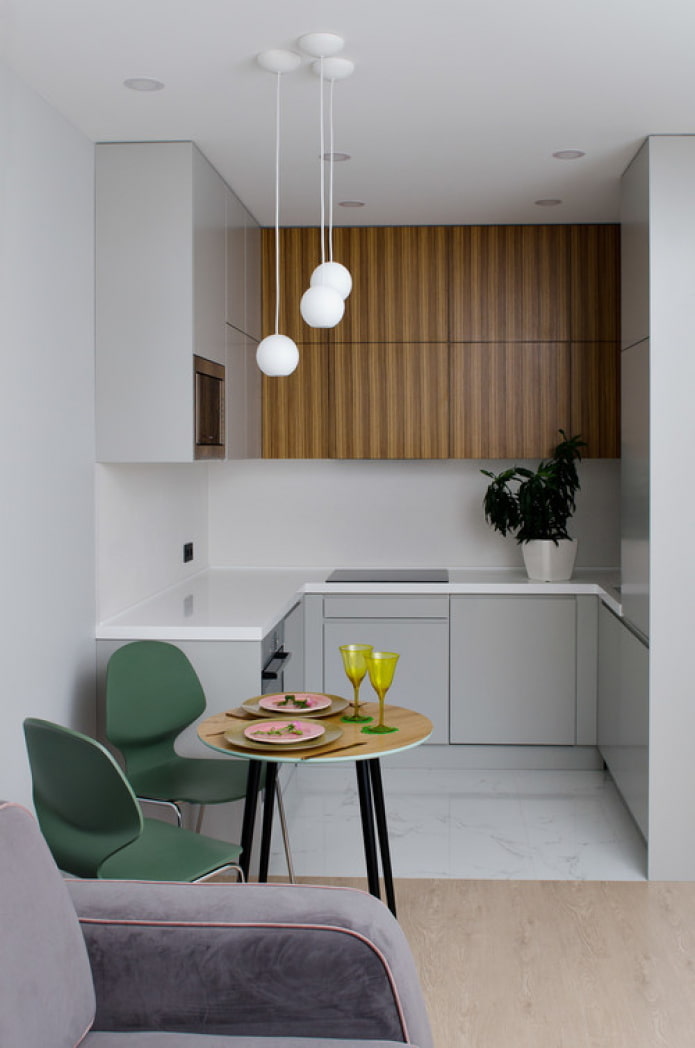
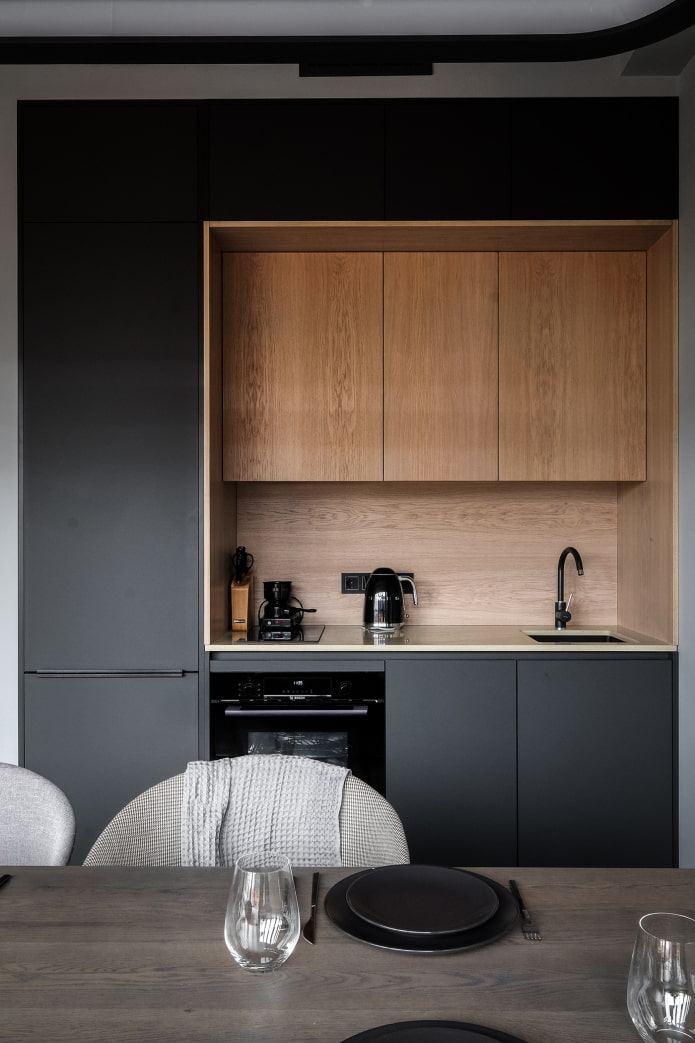
As for the appearance, a custom-made kitchen will look best in modern styles.
- High-tech. Prefer partially built-in technological devices, the design of such a built-in kitchen looks like from the future.
- Minimalism. The fewer details, the better. Hide all the equipment behind the facades, creating a single outline.
- Loft. Play on texture: concrete countertop and sink, facades made of natural wood, a red brick apron.
- Scandinavian. Choose 1-2 details (for example, an unusual sink and hob) and highlight them in the interior, they will become a functional accent.
See photos of real projects in our gallery.
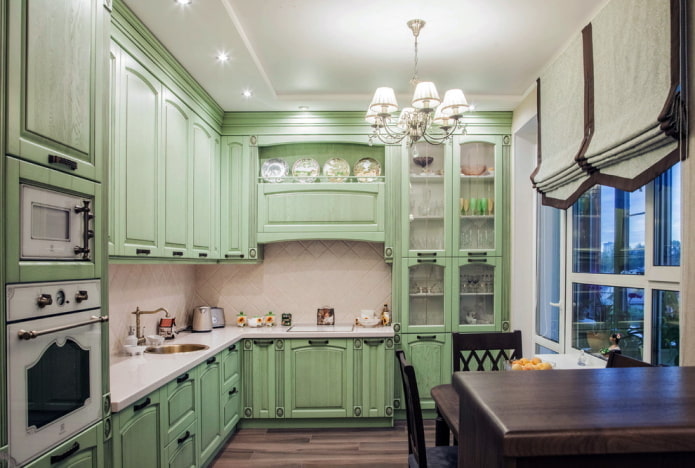
The photo shows an example of an interior in the Provence style
Now reading:
- Curtains for a compact bedroom: inspiring photos and design solutions
- 15 Creative Bathroom Decor Ideas and 45 Inspiring Photos.
- Country Style Bedroom: 40 Inspiring Photos and Design Tips
- ideas on how to effectively use the corner in your kitchen unit.
- Tips for choosing a sink made of artificial stone: advantages, disadvantages and options.